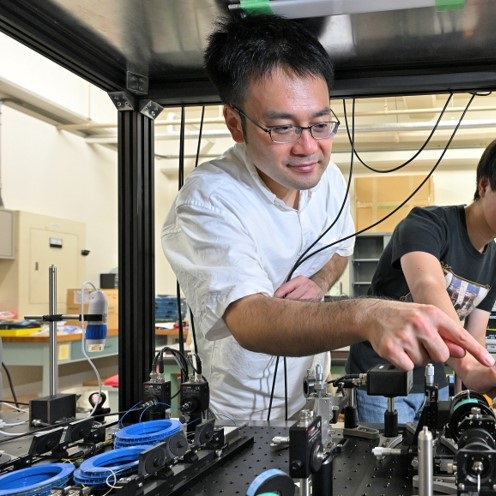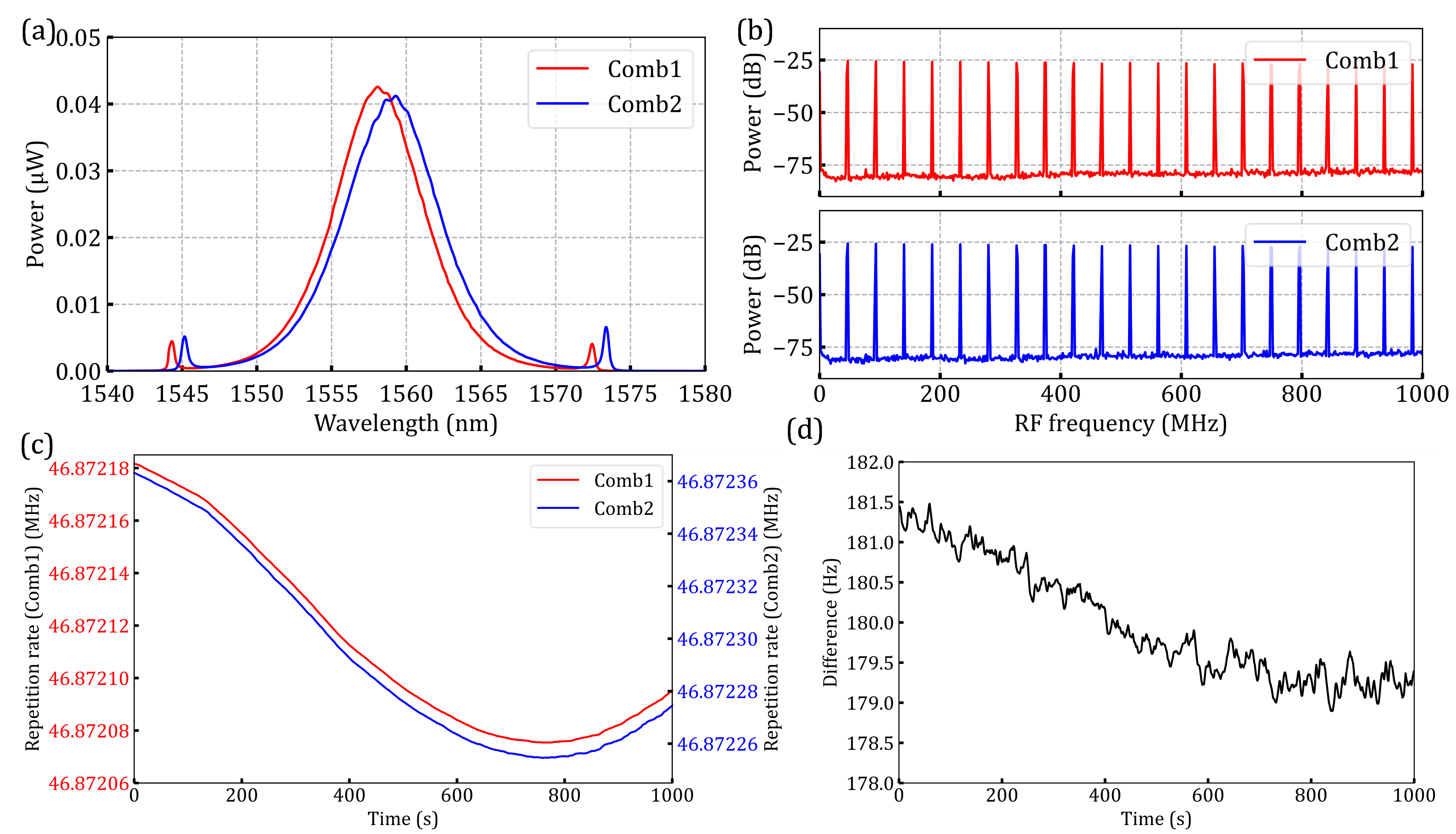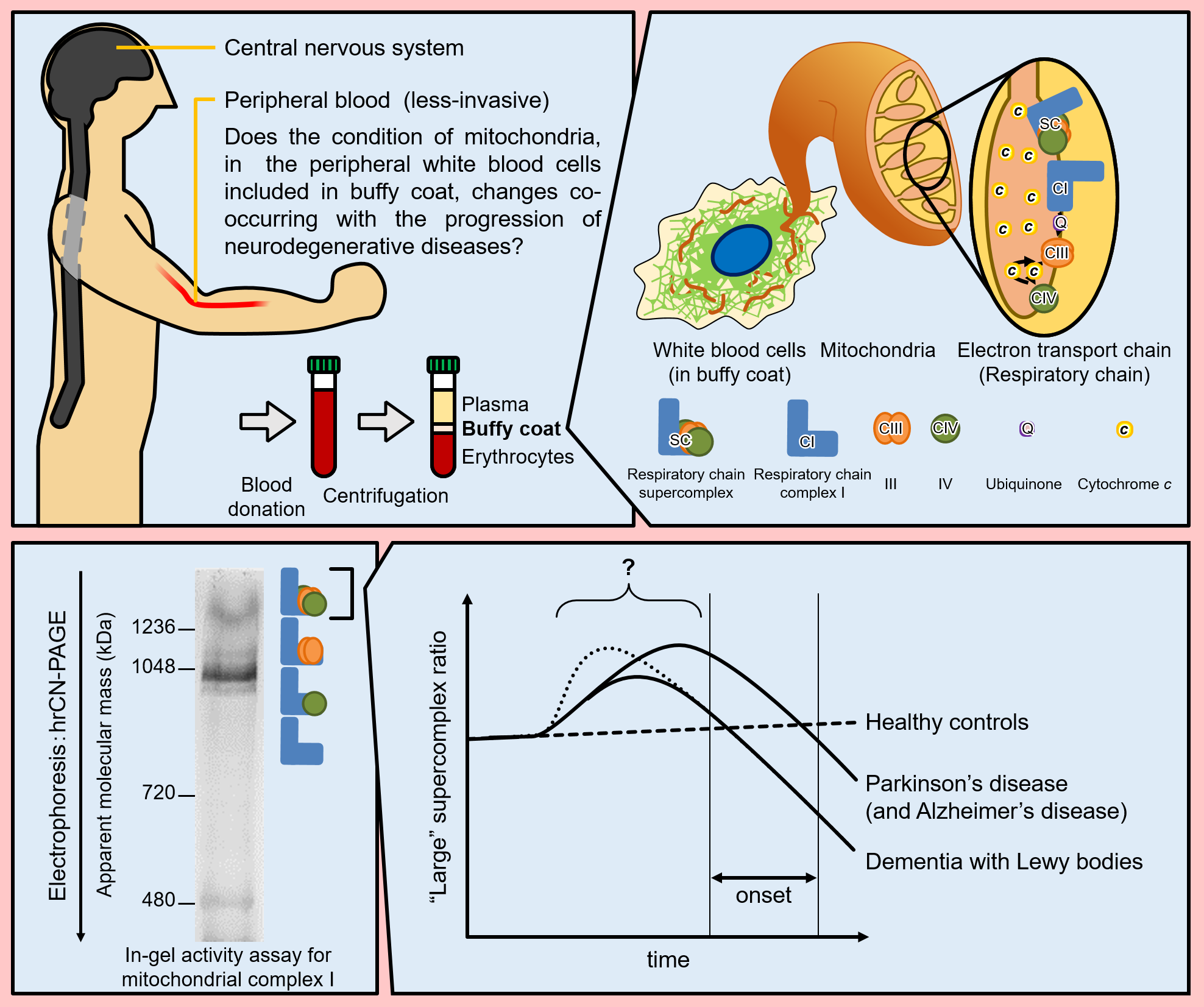Mechanism-sharing dual-comb fiber laser in all-fiber type developed
High-performance, robust, and compact spectrometers are expected to be used practically

The research results were published online in Optics Continuum, a journal of the Optical Society of America (Optica), on August 15, 2023.

The research results were published online in Optics Continuum, a journal of the Optical Society of America (Optica), on August 15, 2023.
- A dual-comb fiber laser that simultaneously generates two optical combs with different repetition rates in a high-performance, robust, and compact configuration was successfully developed.
- It is expected to be a powerful light source for practical dual-comb spectroscopy systems.
- It is expected to be used in various fields such as gas measurement and sensing.
Research background
The optical frequency comb (frequency comb) is an advanced laser technology and served as an indispensable light source in various scientific and technical fields (Fig. 1). It has garnered significant attention for its potential in high-precision spectroscopy. A technique, known as dual-comb spectroscopy, is introduced, utilizing two frequency combs (Comb1 and Comb2) with slightly different repetition rates (see Note 1). First, the absorption information of the measurement target is recorded in modes of Comb1 (Fig. 2(a)). Subsequently, spectral information is acquired from the interference signal (also called the interferogram (Note 2)) using Comb2. This approach facilitates the acquisition of spectral information with high resolution and high speed across a broad bandwidth (Fig. 2(b)).

Fig. 1 Optical frequency comb

Fig. 2 Dual-comb spectroscopy
However, this spectroscopic technique presents several problems. Two different laser sources are required to generate the two frequency combs. Moreover, the two frequency combs require a high mutual coherence (Note 3) and frequency stability, making them difficult to control. Consequently, the overall measurement system becomes large, complex, and expensive, impeding its practical application (Fig. 3(a)).

Fig. 3 Dual-comb spectroscopy system
To overcome the problem, the research group re-examined the laser source configuration, focusing on the miniaturization and robustness of the frequency comb. Consequently, they succeeded in developing an all-fiber mechanism-sharing dual-comb fiber laser that is compact and does not require free-space optics using a saturable absorber micro-optic component and a polarization-maintaining fiber device (Fig. 4). The advantage of this scheme is that the two frequency combs share the same noise level. This reduces the influence of external noise, resulting in very high relative stability (Fig. 5). Furthermore, fast, high-resolution measurements of the absorption spectra of the gas molecules were performed using this new dual-comb fiber laser (Fig. 6).

Fig. 4 Schematic of an all-PM dual-comb fiber laser with mechanical sharing cavity

Fig. 5 Output characteristics of the developed dual-comb fiber laser

Fig. 6 Spectroscopic measurement results of HCN using the developed dual-comb fiber laser
The newly developed dual-comb fiber laser is compact and robust, owing to its all-fiber design. Thus, it is a promising light source for spectroscopic system for plants and other real-world applications. This technology has the potential to improve efficiency and energy savings in industrial fields of increasing importance in the future and is expected to contribute to a stable energy supply, economic benefits, and environmental protection.
Research budget
These results were obtained through the following projects and research projects: Adaptable and Seamless Technology Transfer Program through Target-Driven R and D (JPMJTM22B6), Research Foundation for Opto-Science and Technology, Hattori Hokokai Foundation, Mayekawa Houonkai Foundation, and Japan Society for the Promotion of Science (22H00303).
Optics Continuum Online Issue August 15 2023 issue
Title:
All-polarization-maintaining dual-comb fiber laser with mechanically shared cavity configuration and micro-optic component
Authors:
Takumi Yumoto, Wataru Kokuyama, Shinichi Matsubara, Takeshi Yasui, and Yoshiaki Nakajima*(*responsible author)
DOI NO.:
10.1364/OPTCON.491419
READ MORE RESEARCH NEWS - SCIENCE
Undergraduate Programs
– Medicine
– Pharmaceutical Sciences
– Science
– Nursing
– Health Science
Graduate Programs
–Medicine
–Pharmaceutical Sciences
–Science
–Nursing
RESEARCH
– News
– Guidelines & Policies
– Support Offices
– Facilities
– Security Export Control
Non-Degree Programs
– Clinical Elective Program
– International Physician Observership Program




